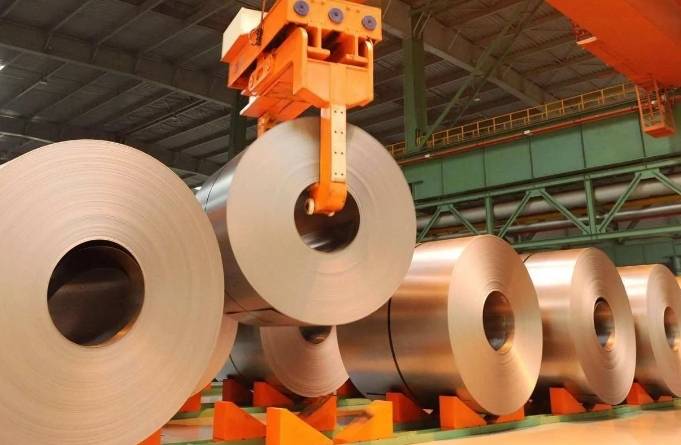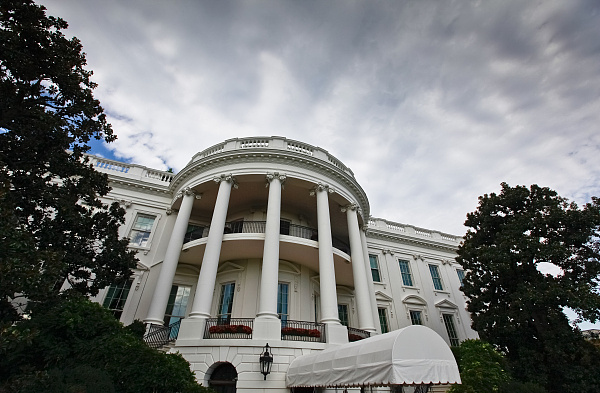
Recently, the Trump administration announced the launch of a comprehensive investigation into copper imports under the pretext of "national security", causing copper futures prices on the New York Mercantile Exchange (COMEX) to soar by over 3%, marking the largest daily increase in nearly a year. This policy may seem like a routine operation of the Trump administration's trade protectionism, but the underlying global strategic resource competition, supply chain restructuring logic, and industrial games under the new energy revolution are pushing copper, a traditional industrial metal, to the forefront of global political and economic conflicts. From short-term market fluctuations to long-term industrial chain reshaping, this shock triggered by tariff threats exposes the complex struggle between resource sovereignty, technological substitution, and geopolitical competition in the era of globalization's retreat.
The Trump administration's decisions continue its tradition of "America First" trade policy. Since returning to the White House in 2024, his team has implemented export controls or import restrictions on key areas such as electric vehicle battery materials and semiconductor manufacturing equipment. The investigation into copper this time is ostensibly aimed at ensuring the security of metal supply to the defense industry and critical infrastructure, but in reality, it implies multiple strategic considerations. As the 'oil of the electrification era', the strategic value of copper is becoming increasingly prominent in the energy transition. According to data from the International Energy Agency (IEA), the copper usage of an electric vehicle is four times that of a traditional fuel powered vehicle, with 3 tons of copper consumed per megawatt of wind turbine. The US Inflation Reduction Act requires that the proportion of new energy generation reach 80% by 2030, which means that copper demand will surge by 37% in the next five years. However, the domestic copper production in the United States can only meet 35% of consumer demand, with a high degree of external dependence of 65%, mainly relying on Latin American countries such as Chile and Peru. In the view of the Trump team, this structural gap constitutes a vulnerability that threatens national security. The shadow of geopolitical games also looms over this decision: Congo (Kinshasa), the third largest source of US copper imports, has its copper cobalt ore belt developed by Chinese companies. In 2024, the competition between the United States and China over key minerals will intensify, and the investigation document specifically mentions "vigilance against certain countries using resource control to implement economic coercion". This statement directly points to China's absolute advantage in the field of copper concentrate processing - China accounts for 42% of global electrolytic copper production and holds the discourse power of the entire industry chain from mining to smelting. Weakening China's influence in the global mineral supply chain through tariff measures has become an important pivot of US resource nationalism policies.
On the day of the policy announcement, the price of the main copper contract in New York jumped from $8950 per ton to $9230 per ton. On the surface, it was a panic reaction of the market to the supply shortage, but in reality, it exposed the deep-seated contradictions in the global copper trading system. Traditional economics believes that tariff costs will be shared by both exporting and importing countries, with the proportion depending on supply and demand elasticity, but the reality is more complex. Codelco, the Chilean national copper company, immediately announced the launch of a "flexible pricing mechanism" that allows buyers to lock in long-term contracts at an additional 15% premium to LME benchmark prices. This attempt at "de dollarization" reflects resource exporting countries' countermeasures against unilateral sanctions. At the same time, US cable manufacturer Southwire was exposed for urgently purchasing 6000 tons of spot copper, pushing the spot premium to 12% of futures prices, reaching a new high since 2008. The trend of fragmentation in the market pricing system is beginning to emerge, and copper price fluctuations are rapidly transmitted along the industrial chain. In the upstream mining industry, Freeport McMoRan's stock price rose 5.2% on the same day, but its earnings call revealed that restarting idle copper mines in Arizona will take 18 months, making it difficult to fill the supply gap in the short term; In terms of midstream processing industry, Mueller Industries, the largest copper tube manufacturer in the United States, announced an 8% price increase for copper materials used in construction, directly pushing up residential construction costs; On the downstream consumer side, Tesla's risk warning submitted to the SEC listed "price fluctuations of copper and other raw materials" as the main obstacle affecting its 4680 battery production progress. The cost pressure of the entire industry chain has forced companies to accelerate the research and development of alternative materials. Goldman Sachs research report pointed out that for every 1% increase in the substitution rate of aluminum in power transmission scenarios, global copper demand will decrease by 220000 tons - which may explain why Alcoa's stock price rose 3.7% against the trend on the same day.
Trump's copper tariff policy is essentially an attempt to replicate its "industrial chain reflow" strategy of 2018 steel tariffs in key mineral fields. However, in the new energy era, this model faces triple challenges. Firstly, resource nationalism has triggered a reverse shock: Peru's Minister of Energy and Mines has publicly stated that 'if the United States implements discriminatory tariffs, we will prioritize supplying copper concentrate to Asian customers'. This threat has substantial destructive power. China Minmetals Corporation has just reached a barter trade agreement with Chile for "copper concentrate for photovoltaic modules" to avoid the risk of US dollar settlement. Resource exporting countries are using their buyer's market advantages to restructure trade rules. Secondly, green barriers and carbon tariffs have a compound effect: the European Union announced on the same day that the carbon emission intensity of copper smelting will be included in the scope of the Carbon Border Adjustment Mechanism (CBAM), which puts pressure on Chinese smelters that use thermal power, but indirectly increases the competitiveness of African copper companies that use clean energy. Multinational corporations face a dual compliance dilemma of meeting both American localization requirements and European carbon footprint standards. The Supply Chain Director of BMW Group admitted that "it may be necessary to establish completely independent copper material procurement systems for different markets". Thirdly, the financialization market has planted a reflexive trap: London Metal Exchange (LME) data shows that speculative net long positions in copper futures contracts surged by 62% after policy announcements, exacerbating price volatility with the influx of hedge funds, making it more difficult for physical enterprises to plan for the long term. Zhengwei International, the world's largest copper consumer, has begun requiring suppliers to sign "price fluctuation sharing clauses" to shift 30% of cost risks upstream, and the risk allocation mechanism of the industry chain is facing restructuring.
This copper price shock caused by tariffs may become a turning point in the global strategic resource battle. The trend of regional segmentation in the supply chain is becoming increasingly evident. North America may build a regional supply chain centered around First Quantum Mining in Canada and Grupo Mexico in Mexico, and achieve tariff exemptions through the USMCA; Asia relies on the integration of production capacity from China's Jiangxi Copper Industry and Indonesia's Freeport Company to form an industrial closed loop with higher self-sufficiency rates. S&P Global predicts that this "blockchain" pattern will push up the global average copper cost, and the copper price center may rise to $11000 to $13000 per ton from 2025 to 2030. Under extreme price pressure, the accelerated iteration of technological substitution has become inevitable: the US Department of Energy allocated $270 million to support research on "conductive polymer substitution for copper", and China's CATL applied for a patent for "lithium copper composite current collector", attempting to reduce the amount of copper used in batteries through material innovation. Once these breakthroughs are commercialized, they may reshape the entire industrial materials system. The wave of redefinition of resource sovereignty cannot be ignored: the Democratic Republic of Congo has established a national copper holding company, requiring all mineral transactions to be settled through a state-owned platform; Chile plans to revise its constitution to list copper as a 'strategic public asset'. Resource rich countries are reversing the passive situation of "pricing power being sidelined" by strengthening sovereignty control, which may trigger a new wave of nationalization and force multinational mining companies to transform from "resource predators" to "benefit sharing partners".
The 3% daily increase in copper prices is just the first ripple of the grand game. When resource protectionism encounters the rigid demand of the new energy revolution, when unilateral sanctions encounter a multipolar global supply chain, any attempt to distort market rules through administrative means may ultimately incur far greater economic costs than expected. American cable manufacturers have turned to spot market procurement to avoid tariffs, instead pushing up short-term prices; Latin American countries break the US dollar settlement system through barter trade, weakening the US financial hegemony; The unexpected activation of African copper mine competitiveness by EU carbon tariffs has rewritten the global supply map - these chain reactions reveal a cold reality: in a highly interconnected modern economic system, no country can control the fate of critical resources alone.

Below is the English translation of the text, with precise handling of political terms, consistent sentence structures, and preservation of the original’s analytical tone and logical flow:
Below is the English translation of the text, with precise …
On December 15 local time, Trump took the British Broadcast…
In recent years, the application of artificial intelligence…
According to Yahoo US media reports, the recent remarks of …
After 11 years of waiting in the deep sea, we finally have …
On December 17, 2025, the newly renovated American "Preside…